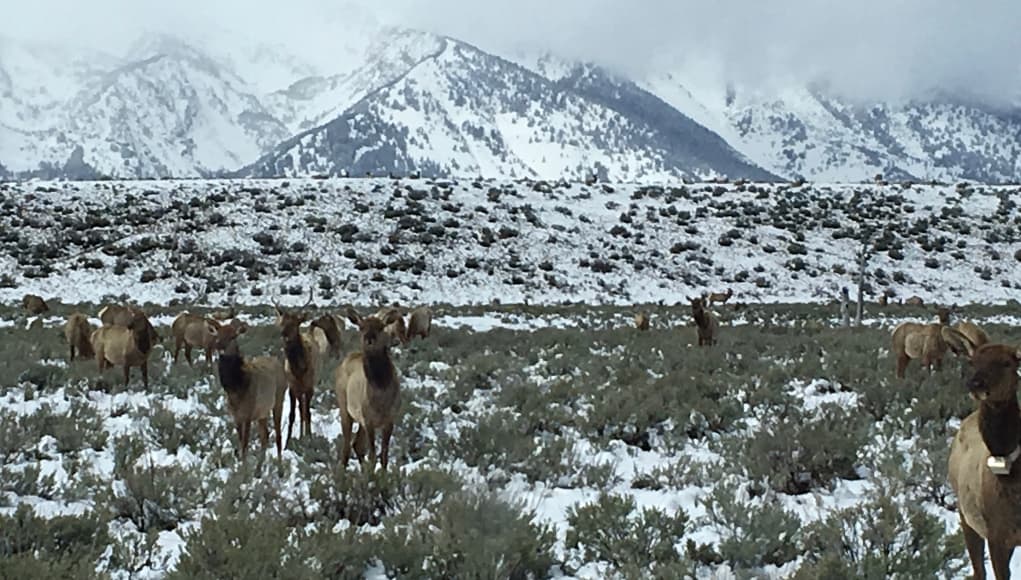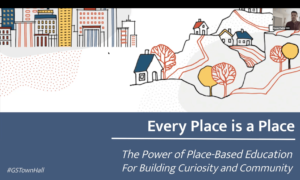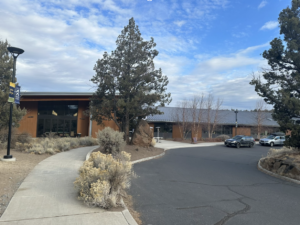On Beautiful Shared Places

We seek an enlargement of our being. We want to be more than ourselves. Each of us by nature sees the whole world from one point of view with a perspective and a selectiveness peculiar to himself…We want to see with other eyes, to imagine with other imaginations, to feel with other hearts, as well as with our own…We demand windows. ~ CS Lewis
The National Mall in Washington, D.C., or Chicago lakefront parks; Grand Teton National Park or a park near your house; the bright lights of Time Square or the grandeur of the Champs-Élysées in Paris; the Smithsonian Museums or the Tate Modern in London–these public spaces are communal, awe-inspiring and essential to the life of a region that is more than survival.
We recently assembled a list of the 32 most pressing issues of our time–hunger, poverty, climate change, just institutions, sustainable development and the like, based on the UN’s Sustainable Development Goals and a few other efforts to enumerate Grand Challenges.
Overflowing with problems, the list seemed short of opportunity so we added human dignity, enterprise and innovation, mindfulness and character. A topic that just wouldn’t stay off the list was beautiful shared places: social and cultural infrastructure, art and architecture, open spaces, parks and museums.
The topic of beautiful shared places kicked off a rich dialog with Getting Smart team and friends. Following is a recap.
Do beautiful shared places belong on a list of important issues?
“Striving for truth, beauty and goodness, to quote Howard Gardner, has been the aim of education since the time of the Ancient Greeks,” said Ron Berger, CAO of EL Education. “Beyond just schools, I live in New England where almost every old town is built around a Town Common–a Town Green–with lawns and trees and perhaps a gazebo or plaza. These spaces bring people together for meetings, festivals, celebrations, sports, events – it makes the town feel like a community.” He added that new suburban communities often have no space like this–the center of town is usually entirely commercial.
“Beautiful shared places you can experience with other members of your community builds and contributes to a shared sense of trust, optimism and empowerment,” said Getting Smart editor Erik Day. He also stated that coming together in public can be useful when it comes to more complicated or divisive issues.
“Shared places creates a sense of awe and wonder,” said Mary Ryerse, director of advisory at Getting Smart. She noted that philosopher Paul Woodruff called it Reverence, the capacity to be in awe of whatever we believe lies outside our control.

“Designed places (museums, buildings, ocean fronts) are exciting in that the beauty is defined through the eyes of each individual who walks through the door, onto the sands of the ocean beach or navigates the landscape of an incredible forest,” said Adam Kulaas, director of school coaching at Getting Smart. He added, “They inspire reflection and growth by expanding through a lens what ‘was’ and more importantly the possibility of what ‘could be’.”
Fostering a sense of awe is linked to positive mental health in many studies. “This could come from a museum, cathedral, top of a mountain or on a beach,” said Nate McClennen, Teton Science Schools. He added that “preserving these spaces in the world is important for long-term human health.”
Andrew Meyers ran City Semester, an interdisciplinary, experiential program at the Fieldston School that takes eleventh and twelfth-grade students out into New York City to construct their own learning experiences and address urban policy challenges. He urges caution around the definition of beauty in cities where it may be more associational than aesthetic given the robust cultural and political dimension of urban life. “There are also the questions of power, access, memory and meaning: who decides what a place means, which memories are sustained, how do the cultures and cultural associations of the less powerful survive?”
Meyers dives into the essence of place-based learning, saying, “Beautiful, shared places such as these hold the DNA of a diverse, dangerous, inclusive, sublime city that is under threat. That DNA is what makes the city a place where we can encounter each other with a degree of civility and common purpose.”
What knowledge and skills are associated with the curation of beautiful places?
McClennen notes that shared spaces “connect to the global goal of sustainable communities, as sustainability always includes economy, culture and ecology.”
Day values the focus on design that shared spaces evoke–the design of place, of experience and of human organizations that create and sustain shared spaces.
Kulaas takes a “choose your own adventure” approach where youth have the autonomy to find the beauty through their eyes and capture reflections that it provides. This learner-driven approach “allows them to navigate the learning and find ownership in protecting the ‘place’ and the experience.”
 Janice Walton, project manager at Getting Smart notes, “Beautiful spaces can be found anywhere, perhaps they are not the “beautiful” in the traditional sense but they have some level of meaning and worth to the students who live there. Students should be allowed to define beauty for themselves and mindful that beauty can exist anywhere.”
Janice Walton, project manager at Getting Smart notes, “Beautiful spaces can be found anywhere, perhaps they are not the “beautiful” in the traditional sense but they have some level of meaning and worth to the students who live there. Students should be allowed to define beauty for themselves and mindful that beauty can exist anywhere.”
“Shared public spaces are where contestations over power and meaning are expressed and (at best) worked out, where collective meaning and memory reside,” said Meyers. An advocate for global competence and critical thinking, he worries about a sterilized, sanitized and privatized view of urban life where “we lose the messy, multi-vocal and specific beauty of urban places.”
Berger looks at how we view beauty created in the past as the definition of a culture’s knowledge and skill level. “When we value ancient civilizations–Chinese, Mesopotamian, Egyptian, Greek, Roman, Mayan–it is not typically for their political leaders but for the beauty of their art, their architecture and the beautiful spaces they created,” said Berger.
Are curation, preservation, design and advocacy going to become more important?
“Open and shared spaces will become more valuable over time as the world becomes more and more curated, technological and automated,” said McClennen, adding that preservation and advocacy are going to become even more important as well.
On almost every street in Seattle, Day says “old, beautiful homes are being torn down and replaced with large, bland soulless units with eight to ten 350-square-foot efficiency studios.” He notes that as space becomes increasingly constrained, it will be more important for people to have access to community spaces. “Humans are social beings, and connected screen time cannot provide a satisfying replacement.”
“As our world continues to change rapidly and unexpectedly, we’ll want and need to preserve things we can control, and beautiful spaces are one of the few things we can design and preserve,” said Catherine Wedgwood, managing editor of Getting Smart. “There is a shared comfort in working together to keep something beautiful and available to everyone to enjoy.”
 As more of us crowd into megacities, what are the implications for shared space?
As more of us crowd into megacities, what are the implications for shared space?
Meyers is concerned about draining the local meaning from place as a result of gentrification, globalization and the emergence of a trans-national urban elite. “The walking tours and urban analyses that my students participate in will have less and less meaning, less and less to teach, as our spaces become homogenized and upscaled.” An example is Essex Street in the Bronx, where not long ago students could see and experience tenements, pickle stores, graffiti, clotheslines and Orthodox Jews next to Iranian nut-sellers and Dominican musicians. But now the street is filled with artisanal coffee shops, luxury condos (sold to absentee owners) and empty high-end clothing shops.
“As cities grow more dense and complex, urban planning and development are of the utmost importance,” said Emily Liebtag, director of advocacy at Getting Smart. As transportation shifts to ride share and autonomous vehicles, Leibtag sees less need for major train stations leaving more room for repurposed space like the Manhattan Highline.
As auto-curation fills every screen we view, what should we be concerned about?
“[We should be concerned] with the ease in which it is possible to accidentally fall into a cultural bubble or niche that makes it increasingly difficult to connect with your neighbor, who is likely to have gone down their own rabbit hole,” said Day.
“I worry about auto-curation decreasing the sense of discovery that I think is important for human development and learning and decreasing the open-mindedness that comes from seeking our own truths rather than being handed auto-curated collections built on our previous activities,” said McClennen. He added that preservation (and exploration) of the common spaces–built and natural–leads to long-term human well-being.
Given the importance of public spaces and the emerging importance of design and curation, we think beautiful places belongs on the list of big issues that young people should grapple with.
For more on beautiful shared spaces, watch the Netflix series Architecture Top 10.
For more, see:
- Designing Beautiful Places for Learning
- 5 Reasons To Take Time Out of the Classroom
- Quick Start Guide to Place-Based Education
Stay in-the-know with all things EdTech and innovations in learning by signing up to receive the weekly Smart Update.








Tom
Two great examples of beautiful shared places in NYC today: 1) running on the Highline, the elevated park on the west side--a great example of community leadership around imagined potential and 2) lunch in Bryant Park (40th & 6th) which was beautiful green grass yesterday and is a dirt pad for an ice rink today--what a great park for lunch